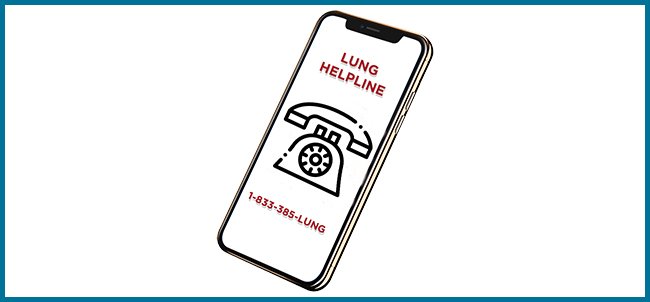Warning Signs of Lung Disease
The most frequent warning signs of lung disease are listed below. If you are experiencing any of these symptoms, discuss them with your doctor as soon as possible.
- Chronic Cough - Any cough that has lasted a month is chronic. This is an important early symptom indicating something is wrong with your breathing system, regardless of your age.
- Shortness of Breath - Shortness of breath that continues after a brief rest following normal exercise, or comes after little or no exertion, is not normal. Labored or difficult breathing, the feeling that it is hard to draw air into your lungs or breathe it out, is also a warning sign.
- Chronic Phlegm Production - Phlegm, or sputum, is produced by the lungs as a defense response to infection or irritants. If your phlegm or mucus production has lasted a month, this could indicate an underlying problem.
- Wheezing - Noisy breathing or wheezing is a sign that something unusual is blocking the airways of your lungs or making the airways too narrow.
- Coughing Up Blood (Hemoptysis) - If you are coughing up blood, the blood may be coming from your lungs or upper respiratory tract. Whatever the source of the blood, it signals the onset of a health problem.
- Frequent Chest Colds - If you have more than two colds a year, or if one lasts more than two weeks, you may have an underlying disorder.
What do these symptoms mean?
Experts agree that your lungs are not healthy if you have any of these symptoms. You must have them checked out by your doctor. If you wait for symptoms to become severe, you have already lost valuable treatment time. Taking care of mild symptoms can actually be to your advantage.
Even if you have only one of the symptoms of lung disease - chronic cough, shortness of breath or difficult breathing, phlegm, wheezing, or frequent chest colds - you should see your doctor. Most lung conditions can be helped by treatment and can even be reversed if caught early.
Symptom Diagnosis
Your doctor will usually use very simple tests to determine if you have a lung disease. He or she will take a medical history and give you a complete physical examination. Your examination may include some simple laboratory tests like a chest x-ray, blood tests, a phlegm (sputum) examination, and a pulmonary function test, which is a painless procedure that shows the doctor how well your lungs work when you breathe. Exercise testing may also be done to examine the body's response to exertion or physical activity.
Health authorities advise a tuberculosis (TB) skin test for various groups of people, including all persons who are HIV-positive, meaning that they have tested positive for the human immunodeficiency virus that causes AIDS. Since the TB test reaction may be misleading in AIDS, a chest x-ray and complete physical exam may be recommended even if the tuberculin test is negative.
Based on information gathered through these quick and basic tests, your doctor will decide which lung disease, if any, exists. Then, appropriate treatment can be started.





